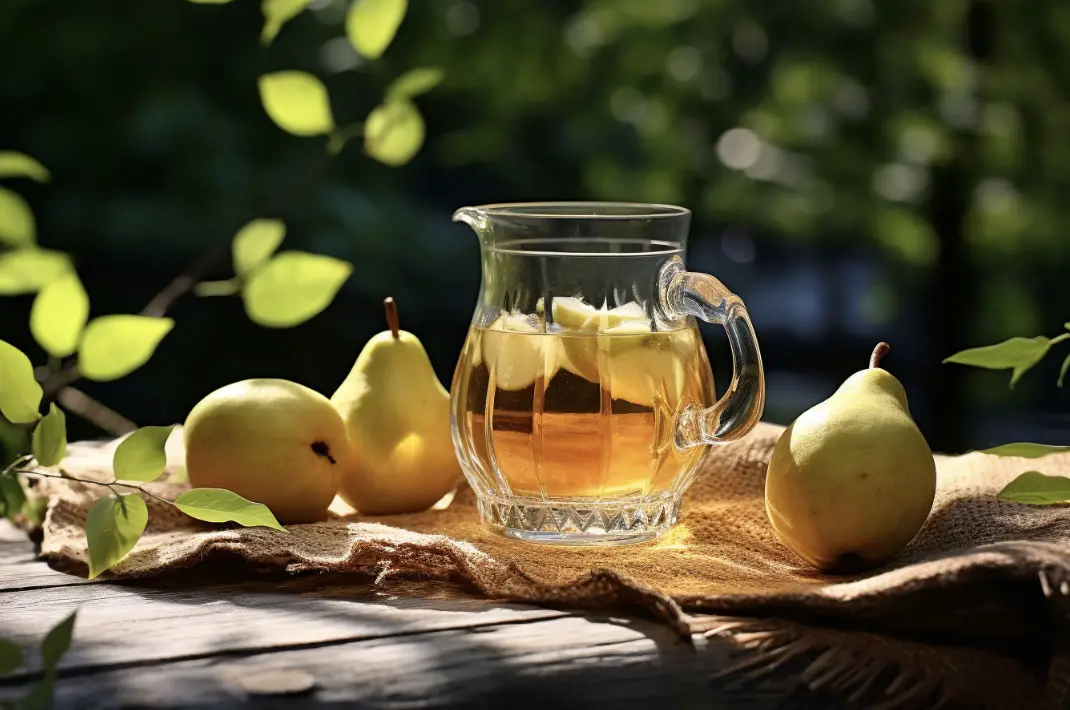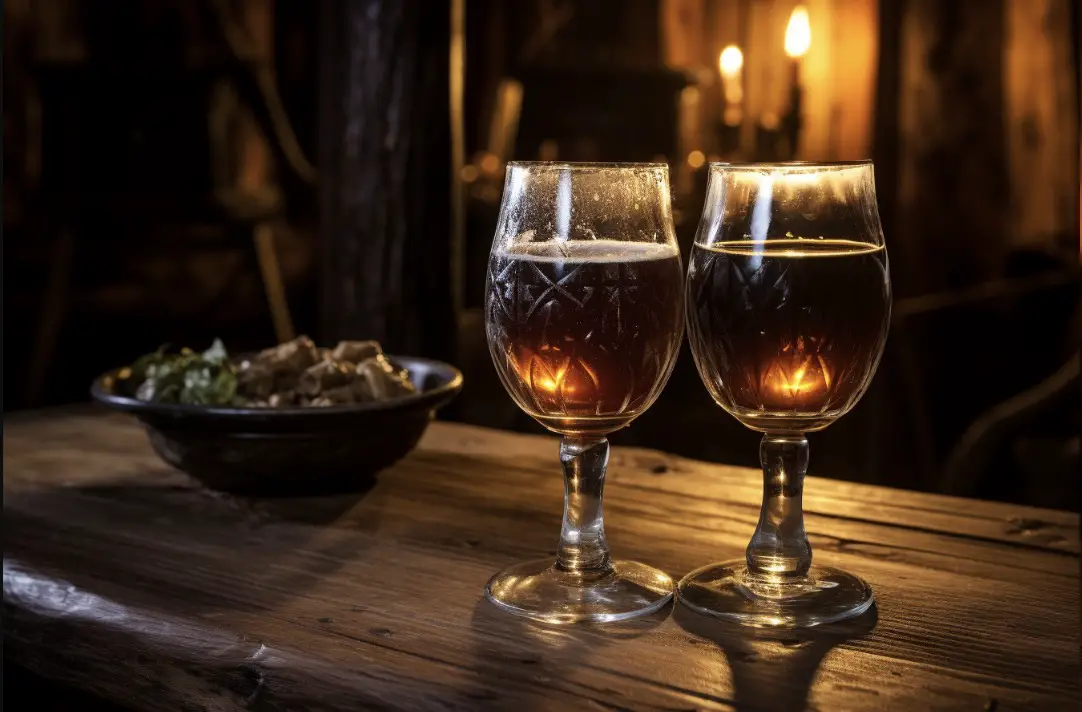As a seasoned brewer and a lover of all things beer, I’ve had the pleasure of exploring various beer styles from around the world.
Two such styles that have piqued my interest are Kölsch and Helles. Though they may seem similar at first glance, the difference between Kölsch and Helles lies in their origins, brewing processes, and flavor profiles.
In this post, I’ll dive into my personal experiences with these two beer styles, as well as provide insight into their brewing processes, smells, looks, and tastes. So, grab a pint and join me on this exploration of Kölsch and Helles!
Key Differences Between Kölsch and Helles
To sum up, here are the essential differences between Kölsch and Helles:
| Aspect | Kölsch | Helles |
|---|---|---|
| Origin | Originated in Cologne (Köln), Germany. | Originated in Munich (München), Bavaria, Germany. |
| Appellation | Protected designation of origin. | No geographical restriction. |
| Appearance | Pale, golden, clear with a moderate head. | Pale and golden but might have a slightly deeper gold hue. |
| Flavor Profile | Delicate balance with a slightly fruity note. | Mild and malty, subdued hop flavor. |
| Aroma | Faint fruitiness, light maltiness, minimal hop aroma. | Predominantly malty without pronounced hop or fruitiness. |
| Alcohol Content | Typically 4.4% to 5.2% ABV. | Around 4.7% to 5.4% ABV. |
| Fermentation | Top-fermented, conditioned at cooler temperatures. | Bottom-fermented using lagering techniques. |
| Mouthfeel | Crisp and slightly dry finish. | Smooth with a more rounded mouthfeel. |
| Serving Glass | Served in a tall, thin 200ml “Stange”. | Served in a Maß or a half-liter mug. |
| Popularity | Popular in the Cologne region, has international recognition. | Consumed throughout Bavaria and Germany, common export. |
So, there you have it! The difference between Kölsch and Helles lies in their origins, brewing processes, and flavor profiles.
Let’s go a bit deeper into some of these differences.
1. Origins: Cologne vs. Munich
One of the significant differences between Kölsch and Helles is their origins. Kölsch hails from Cologne (Köln), Germany, while Helles comes from Munich, Germany.
These two cities have unique brewing traditions and histories, which are reflected in their respective beer styles.

Cologne, situated on the banks of the Rhine River, has a long history of brewing top-fermented beers. Kölsch is a prime example of this brewing style, which dates back to the early 20th century.
The term “Kölsch” is protected by the Kölsch Konvention, which stipulates that only beers brewed in the Cologne area can bear the name Kölsch.
On the other hand, Munich is known for its bottom-fermented lagers. Helles, which directly translates to “light” in German, was conceived in the late 19th century as a response to the popularity of Czech Pilsners. Munich brewers wanted to create a similarly light and refreshing beer, and thus, the Helles style was born.
2. Brewing Process: Top-Fermented vs. Bottom-Fermented
Another crucial difference between Kölsch and Helles is the fermentation process. Kölsch is a top-fermented beer, meaning it utilizes ale yeast strains that ferment at warmer temperatures (around 15-20°C or 59-68°F) and rise to the surface during fermentation.
On the contrary, Helles is a bottom-fermented beer, which means it uses lager yeast strains that ferment at colder temperatures (around 7-13°C or 45-55°F) and settle at the bottom of the fermentation vessel. This distinction in fermentation processes leads to differences in flavor profiles and overall characteristics of the finished beers.
3. Malt Bill: Pilsner Malt Takes Center Stage
Both Kölsch and Helles styles predominantly use Pilsner malt as their base malt. However, Kölsch recipes may sometimes include a small percentage of wheat malt, which contributes to the beer’s delicate and slightly fruity character.
Helles, on the other hand, typically consists of 100% Pilsner malt, which imparts a clean and bready malt profile.
4. Hops: Noble Hops in the Spotlight
When it comes to hops, both Kölsch and Helles showcase the subtle and delicate flavors of German noble hops.
These hops are known for their low bitterness and floral, herbal, and spicy aromas. While both beer styles feature a gentle hop bitterness, Kölsch generally has a slightly more pronounced hop presence than Helles, which focuses more on the malt profile.
5. Smell: Delicate Aromas in Both Styles
When I’ve tasted Kölsch and Helles side by side, I’ve noticed that both styles have subtle and delicate aromas. Kölsch typically exhibits a light fruitiness from the ale yeast, combined with the floral and herbal notes from the noble hops.
In contrast, Helles has a clean and bready malt aroma with just a hint of noble hop character.
6. Look: Pale and Clear
Both Kölsch and Helles are pale, straw-colored beers that should be brilliantly clear when served. Kölsch tends to have a slight haze due to the presence of wheat malt in some recipes, but both styles should have a nice, white, and persistent head.

7. Taste: Balance is Key
When it comes to taste, balance is the name of the game for both Kölsch and Helles. Kölsch has a delicate balance between the fruity ale yeast character, the bready malt backbone, and the gentle hop bitterness. Helles, on the other hand, showcases a clean and bready malt profile with just enough hop bitterness to balance the sweetness.
8. Mouthfeel: Light and Refreshing
Both Kölsch and Helles have a light and refreshing mouthfeel, making them perfect for warm weather and easy drinking. Kölsch may have a slightly creamier mouthfeel due to the inclusion of wheat malt, but overall, both styles should be crisp and smooth on the palate.
Conclusion: 8 Facts About Kölsch and Helles
To sum up, here are the essential differences between Kölsch and Helles:
1. Kölsch originates from Cologne, while Helles comes from Munich.
2. Kölsch is a top-fermented beer, while Helles is a bottom-fermented lager.
3. Both styles predominantly use Pilsner malt, but Kölsch may include a small percentage of wheat malt.
4. Kölsch and Helles both feature German noble hops, but Kölsch typically has a more pronounced hop presence.
5. Kölsch exhibits a light fruitiness in its aroma, while Helles has a clean and bready malt aroma.
6. Both styles are pale, straw-colored beers with a clear appearance.
7. Kölsch and Helles both showcase a delicate balance between malt and hop flavors.
8. Both Kölsch and Helles have a light and refreshing mouthfeel.
So, there you have it! The difference between Kölsch and Helles lies in their origins, brewing processes, and flavor profiles. Regardless of their differences, both styles offer a delightful drinking experience worth exploring. Cheers!
FAQs
What makes a Kolsch different?
A Kölsch is a unique beer style originating from Cologne, Germany, and is characterized by its light, crisp, and refreshing qualities. It is different from other beers due to its hybrid brewing process, which involves using top-fermenting ale yeast but fermenting and conditioning at cooler temperatures like a lager. This results in a clean, smooth flavor profile with subtle fruity notes, low bitterness, and a pale straw color. Kölsch beers are typically low in alcohol content (around 4.4-5.2% ABV) and are protected by an appellation, meaning only beers brewed in Cologne can be officially labeled as Kölsch.
Is Helles a pale lager?
Yes, Helles is a pale lager. It is a German beer style characterized by its golden color, mild maltiness, and low hop bitterness, making it an easy-drinking and refreshing beer. The term “Helles” translates to “light” or “pale” in German, referring to its color rather than its body or alcohol content.
What is considered a pale lager?
A pale lager is a type of beer characterized by its pale golden color, light to medium body, and crisp, clean flavor profile. It is brewed using a bottom-fermenting yeast strain known as lager yeast, which ferments at cooler temperatures than ale yeasts. Pale lagers typically have a lower alcohol content, ranging from 4-6% ABV, and a mild hop bitterness. Popular examples of pale lagers include Pilsners, American light lagers, and Helles lagers.
Is Michelob a pale lager?
Yes, Michelob is a pale lager. It is an American-style premium lager brewed with a blend of two-row and specialty malts, European hops, and a traditional lager yeast, resulting in a crisp, clean, and smooth beer with a pale golden color.
How is Helles lager different?
Helles lager is different from other lagers due to its distinct characteristics in terms of flavor, color, and origin.
Helles lager, originating from Munich, Germany, is a pale, golden-colored beer with a clean, malty sweetness and a subtle hoppy bitterness. It has a slightly lower alcohol content, usually between 4.7% to 5.4%, and is characterized by its balanced, smooth, and crisp finish.
The use of noble hops in Helles lager provides a delicate floral or spicy aroma, while the malt imparts a gentle bready or grainy taste. Overall, Helles lager stands out for its refreshing, easy-drinking quality and emphasis on malt flavor, as opposed to more hop-forward lagers.





